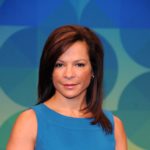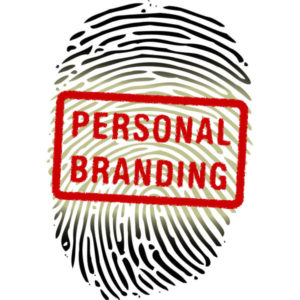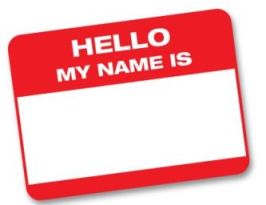A couple of weeks ago, I had the good fortune to be interviewed by Dan Raviv, a correspondent for CBS Radio. During our conversation, Dan asked me what “elements” he should mix together to help build an audience for the CBS News Weekend Roundup radio show. I hemmed and hawed a bit, suggesting he start with his target audience. He probed on this suggestion but I remained steadfast in the need to start with your customer, listen to their needs, find an insight and build from there. Of course, in classic writer-like wit, I thought of the perfect response an hour after I hung up with Dan. To redress the vagueness of my real-time suggestions, this post will outline a more precise path for Dan and the show to build a broader audience by applying a few of the “Elements” from my book, The CMO’s Periodic Table: A Renegade’s Guide to Marketing, and, at the same time, offer insights on how we can all become the CMO of our personal brands.
Element R = Research
Since CBS Radio most likely already has Nielsen data on the size and demographics of its target audience, Dan can focus his research efforts on these two areas:
- Superfan qualitative: The goal here is to identify the predilections of his most dedicated listeners. What do these folk really like about Dan and the show? What do they hate? What inspires them to tell friends about Dan? Are there particular topics that resonate with this group? Do they just like his radio-perfect voice? This research could be done via small groups or 1:1 interviews, creating the added opportunity to gather recorded testimonials. Also, after the interviews Dan could meet these folks face-to-face to reinforce their connection to him and perhaps create potentially viral (see element GV: Going Viral) content.
- Superfan quantitative: Like the qualitative research, quantitative research could serve multiple purposes. First, it could provide further insights into the target. Second, it could generate ideas for future stories and make the fans feel more involved (bringing in another element, Ug: User Generated Content). Finally, this research, if structured correctly, could become a source of news in and of itself.
Element S = Strategy
In reconsidering Dan’s question, it seems to me that there may have been two brand strategies to discuss: the personal brand of Dan Raviv, as well as the radio show, CBS News Weekend Roundup. And while these brands may be intertwined at the moment, Dan has the long-term interest of building his own brand (see Pb: Personal Branding) but doing so in a way that is also of benefit to his employer. In both cases, the strategy needs to be boiled down to two-and-a-half questions:
- What makes Dan unique? What makes CBS News Roundup unique? And where is the overlap?
- Who is the customer and who isn’t?
I don’t know Dan’s work well enough to determine if he has a unique point-of-view, a unique sound, a unique personality or a signature phrase that would distinguish him from other on-air talent. What I do know is that many of his predecessors at CBS did become brands in their own right, from Edward R. Murrow to Charles Kuralt. These individuals were distinguished not just by their unique voices but also by bringing a consistently distinctive perspective to their reporting. Pre-meditated thinking about becoming a brand may be heretical to a dedicated, integrity-first newsman, BUT I would argue that taking the time in the early part of one’s career to map out a personal brand strategy would be time well spent.
Element Bc = B2C Content Marketing
Content-rich brands like CBS Radio have a huge advantage over most in that they already have a steady stream of content to draw upon to engage current customers and attract new ones. They also have the staff on hand to edit and repurpose this content into everything from podcasts to topical social media posts (see element Sm: Social Media Success and how The Weather Channel did this to great effect). Of course, it would help Dan and his employer if CBS Radio had an enlightened employee advocacy program to make intriguing content accessible for him to promote via his personal social channels (see Sp: Sharing Passion). Additionally, CBS Radio and Dan personally could be active listeners for topical conversations on social media channels, creating the opportunity for content sourcing and audience engagement (see Rm: Real-Time Marketing).
For non-media brands, creating content is obviously more difficult but just as essential. The key here (again) is to start with your target and create content that answers the top 10 questions that they have about your particular product or service. For Dan, this might mean opening the kimono a bit and sharing how they decide on what to report, how stories get produced and what it is like to be a correspondent. I could go on here about how to parse out this content, how to optimize it for search engines and social sharing, but we’ll have to leave that for another post.
Element In = Influencer Marketing
The basic idea behind influencer marketing is that a brand cultivates advocates who, in turn, spread the word about that particular brand. In most cases, there is some exchange of value between the brand and the influencer, whether it’s cash money, goods and services, or social currency. For example, IBM invited a broad range of influencers to one of its annual customer conferences with the simple promise that these influencers would get unique access to potential news sources. Admittedly, replicating this approach would probably break ethical boundaries for CBS Radio BUT that doesn’t mean there isn’t an opportunity for Dan (and perhaps CBS) to cultivate a wide range of influencers in an ethical manner. For example, the currency in this case could be as simple as a shout-out via social channels, which the recipient would take as an affirmation of their existence! Here’s proof that it works: this so-called influencer shared the heck out of the tweet below:
Enjoyed interviewing @DrewNeisser of @RenegadeLLC on his book “The CMO’s Periodic Table”: the elements of #marketing. Airdate TBA on CBS.
— Dan Raviv (@DanRaviv) January 28, 2016
Reality Check
For all I know, it is quite possible CBS Radio and Dan are already blending the elements mentioned above, which is why I was reluctant to conjure up a solution while on-air and why agencies like mine have a discovery process to make sure we define the challenge correctly and know what’s been tried already. But the intent of this post was not to provide a ready-made solution for Dan, CBS Radio or your brand. The point here is that each of us needs to become the CMO of our personal brands, taking charge of everything from strategy to execution, and blending the “elements” of marketing that are just right for your life goals.
And just in case you want to listen to my interview with Dan, here’s your chance to find out why I don’t have my own radio show:


